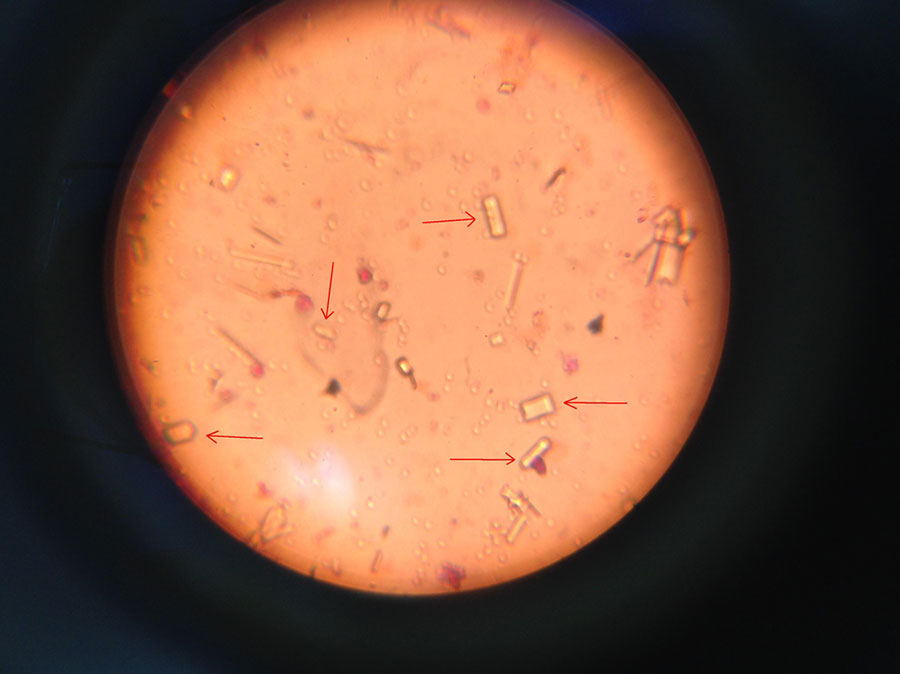Urinalysis
A urine test (urinalysis) is done in any case of abnormal urination, whether it is a case of abnormal urine (e.g. bloody urine, smelly urine, etc.) or a case of normal urine but abnormal urination (e.g. urinating very few drops, too frequent urination, dogs urinating indoors, cats urinating out of the litter box, etc.)
The urine can be collected in two ways:
1. Direct collection from the urinary bladder ("cystocentesis") – this is the preferred method because it gives us a more accurate picture of the state of the urine inside the urinary bladder.
This method is done in the clinic and sometime requires sedating the pet.
2. Collection during/after urination – this can be done by you, the owners. With dogs it is usually quite easy to collect urine during urination. With cats a special kind of litter can be used. This litter is hydrophobic and does not absorb the urine so it can be easily collected.
This method is less accurate because the urine "gets dirty" as it passes through the urethra on its way out.

